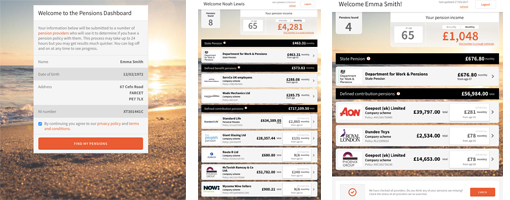Continued testing and optimisation should take place once pensions dashboards are live to ensure their continued effectiveness, according to a report from the Behavioural Insights Team, commissioned by the Pensions Dashboards Programme (PDP).
The Rapid Evidence Assessment report found that work on pensions dashboards is still “relatively nascent” and that there are many gaps in relation to understanding how people will behave in practice when interacting with dashboards.
Despite this, it noted that there is some evidence around the potential behaviour of dashboard users, clarifying that insights can also be drawn from broader pensions literature and behaviour science.
The report found that, consistent across multiple studies, the most important piece of information to be included is projected retirement income, with state pension amounts, retirement ages, charges and levels of risk also highlighted as important to users.
It also pointed out that users may expect the dashboards to be interactive and that only one published study has tested this, with that research finding that increasing the interactivity improved engagement.
In addition to this, it noted that there have been “conflicting findings” on user tolerance of incomplete dashboards and, anecdotally, the use of pensions dashboards in Denmark increased substantially once all providers were available.
Considering this, it suggested that it may be beneficial to wait until pensions dashboards are almost complete, in case incomplete dashboards deter future engagement.
The report also highlighted broader strategies from the pensions industry that could apply to the design of pensions dashboards, such as those focused on prompting people at timely moments, making the future more salient, or providing rules of thumb.
Broader strategies learned from behaviour science, which have been shown to change behaviour in a variety of contexts, were also highlighted, including personalisation, social norms and loss framing.
However, the Behavioural Insight Team clarified that there is little published data on what information users actually use on a live dashboard, and how savers will actually behave when they interact with dashboards.
As such, it emphasised that continuous evaluation and monitoring will be "important" in considering whether different features are actually driving behavioural change once dashboards are up and running, with the PDP urged to avoid a "set and forget" approach.
Latest News
-
TPR launches consultation on new-look CDC code of practice
-
Govt urged to undertake AE review as thresholds remain at 2025/26 levels
-
Dashboards rollout set to expose pensions admin weak spots
-
'Bright future' ahead for DB superfunds amid growing interest
-
SPA increases branded a 'red herring' by HoL Economic Affairs Committee
-
Pensions must be ‘fully integrated’ into corporate strategy in 2026
Private markets – a growing presence within UK DC
Laura Blows discusses the role of private market investment within DC schemes with Aviva Director of Investments, Maiyuresh Rajah
The DB pension landscape
Pensions Age speaks to BlackRock managing director and head of its DB relationship management team, Andrew Reid, about the DB pensions landscape
Podcast: From pension pot to flexible income for life

Podcast: Who matters most in pensions?

In the latest Pensions Age podcast, Francesca Fabrizi speaks to Capita Pension Solutions global practice leader & chief revenue officer, Stuart Heatley, about who matters most in pensions and how to best meet their needs
© 2019 Perspective Publishing Privacy & Cookies










Recent Stories